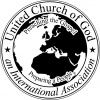Questions Over Who’s Who
Simon Brach is also listed as a king—sometimes as the son of the king of Spain—who doesn’t always fit in time. Neither seems to always fit chronologically with Heremon. And the names Tea, Tephi and Tamar don’t always seem to refer to the same person.
However, while many obvious and important facts may be sifted from the Irish histories and various clan pedigrees, there is much reason to doubt their accuracy with respect to dating specific rulers—or, more accurately, to the dating scheme the chroniclers adopted—particularly since they are not all in agreement. It seems the various records and traditions the chroniclers drew on were in somewhat of a jumble, and compiling them involved going through them and trying to put things in order. The records themselves may have been somewhat reliable. (We just don’t know as they are now lost.) But the way they were put together is clearly problematic.
For instance, the compilers evidently placed dynasties in succession that were actually overlapping and contemporary—thus stretching the beginning of the Milesian kings back to an impossibly early date of 1700 B.C. (It is impossible because the Milesians arrived after the Israelite Danaans or Danites. And, in 1700 B.C., Jacob’s family, still small, had not even yet gone down into Egypt. There was, as yet, no tribe of Dan. Indeed, that was when Joseph was sold into Egyptian slavery and Perez and Zerah were only just born.)
Additionally, it seems that in at least one instance where an ancient source of the Irish chronicles appears to have contained a Hebrew sentence, the compilers mistakenly reckoned the Hebrew words as the names of rulers (see Milner, p. 11 footnote). Furthermore, multiple individuals seem to have become conflated into one at times—or, in other cases, different aspects of the same person have been distributed among multiple people.
That all being so, it seems entirely possible that Ollam Fodhla can be chronologically aligned to be Jeremiah in the 500s B.C. Thomas Moore quoted Charles O’Conor’s Dissertations on the History of Ireland (1766, sec. 4) as showing that Ollam Fodhla held sway in Ireland around 600 B.C.—though Moore believed the royal sage lived much later.
Regarding a tradition that Jeremiah is buried on Devenish Isle in Lough Erne near Enniskillen in Northern Ireland, a local publication states: "The Jeremiah stories are not local [they come from other parts of Ireland and thus do not constitute wishful thinking on the part of area residents], and are not found in the annals [under the name Jeremiah that is], where Cessair, Noah’s grand-daughter, and other Old Testament characters figure. There are two versions of the Jeremiah story.
"Jeremiah, a priest of the house of Aaron, fled from Jerusalem upon its destruction by the King of Babylon, taking with him his daughter Hamutal, widow of King Josiah, and her two daughters [a common error since Hamutal’s father was also named Jeremiah but of Libnah, whereas the prophet Jeremiah was from Anathoth] and some national treasures from the Temple. The most important of these was the Lia Fail, or Stone of Destiny, Jacob’s stone.
"The boat was shipwrecked off the coast of Ireland, but the company managed to make its way to the hill-seat of the last Tuatha De Danaan kings of the tribes of Dan. An Irish jingle is taken as evidence for this legend; the Finn in question is dated 600 B.C., the time of Jeremiah: Finn McCool went to school / With the prophet Jeremiah. So Finn learned the Law from Jeremiah, and his successor, the Milesian king, called the hill Torah (the Law) or Tara. Jeremiah’s body is said to have been conveyed all the way to Devenish island for a king’s burial . . .
"Another version of the story makes Jeremiah flee to Ireland with Tea Tephi, eldest daughter of Zedekiah, in the ships of the Danites. Again, his grave and the Lia Fail are said to be on Devenish" (Mary Rogers, Prospect of Fermanagh, 1982, pp. 30-31). However, some say he—or rather Ollam Fodhla—is buried near Tara. This could be another result of the confusion of various identities of the period.
In any case, the dating of 600 B.C., or actually shortly afterward in the 500s, is quite reasonable. Indeed, a strong case can be made that the Milesian invasion did not commence until about this time—a critical factor in considering when Ollam Fodhla came on the scene, since he flourished during the Milesian period (see Appendix 6: "Dating the Milesian Arrival in Ireland").
